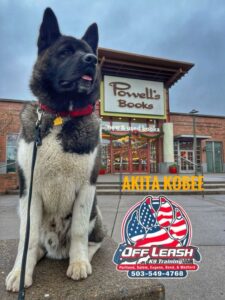Understanding Service Dog Training: Task vs. Public Access
Understanding the Distinction Between Service Dog Task Training and Public Access: This article provides an overview of the differences between service dog task training, which focuses on teaching specific skills to assist individuals with disabilities, and public access training, which emphasizes appropriate behavior in public environments.
Introduction to Service Dog Training
Service dog training encompasses two main components: service dog task training and public access training. Service dog task training focuses on teaching specific skills that assist individuals with disabilities in their daily lives, while public access training ensures that service dogs can behave appropriately in various public environments [2]. Understanding the distinction between these types of training is essential for handlers and the general public.
Service dog task training involves teaching skills that are tailored to the individual needs of the handler. For instance, a service dog trained to assist a person with diabetes may be taught to alert them when their blood sugar levels are too high or too low. This specific task training is crucial as it directly impacts the quality of life and independence of the individual.
On the other hand, public access training is focused on preparing service dogs to navigate public spaces with ease. This training includes teaching the dogs how to interact politely with strangers, remain calm in noisy environments, and follow commands amidst distractions. For example, a service dog undergoing public access training would be trained to ignore food on the ground or loud noises while walking with their handler in a crowded area. Mastering these skills is vital for service dogs to accompany their handlers in public places without causing disruptions or posing risks to themselves or others.
Service Dog Task Training
Service dog task training involves teaching dogs specific tasks tailored to the individual needs of their handlers. These tasks can range from responding to medical emergencies, providing stability for balance, alerting to specific sounds or smells, to various other customized skills. The training techniques used in service dog task training are specialized to ensure that the dogs can reliably perform these tasks in different real-life situations.
An example of a task included in service dog task training is alerting a diabetic individual to changes in their blood sugar levels by scent detection. The dog is trained to recognize the specific scent associated with low or high blood sugar and alert the handler by nudging or pawing them to take action.

Public Access Training
In contrast, public access training focuses on teaching service dogs how to navigate public spaces, interact politely with strangers, and remain calm in challenging environments. Dogs undergoing public access training are taught to maintain focus on their handler despite distractions and to exhibit good manners to ensure they can accompany their handlers without causing disruptions.
One critical behavior covered in public access training is the ability of the service dog to remain calm and focused while in a busy restaurant. The dog is trained to stay quietly under the table, not begging for food or causing a disturbance, showcasing good manners and obedience in a public setting.
Minimum Training Standards for Public Access
Organizations like the International Association of Assistance Dog Partners (IAADP) have set forth minimum training standards for public access, which play a vital role in ensuring that service dogs are adequately trained to navigate diverse public environments. These standards encompass various aspects of training, including the mandated number of training hours, the specific behaviors that service dogs must demonstrate, and the emphasis on personalized task training tailored to the handler’s needs. For instance, a service dog trained to assist a person with mobility impairments may learn to retrieve items, open doors, or provide stability when walking, showcasing the importance of individualized task training in meeting the handler’s specific requirements.
Adherence to these minimum training standards is crucial as it serves as a benchmark for evaluating the readiness of service dogs to accompany their handlers in public spaces. By mandating a minimum number of training hours, organizations like IAADP ensure that service dogs receive comprehensive training that covers essential skills needed for successful public access. Additionally, the emphasis on specific behaviors and personalized task training underscores the significance of tailoring the training to the unique needs of each individual with a disability. For instance, a service dog trained to alert a deaf individual to sounds such as alarms or doorbells must undergo specialized training to recognize and respond to these auditory cues effectively, showcasing the depth of training required to meet the diverse needs of service dog handlers.
Public Access Test Evaluation
The Public Access Test is a critical evaluation that determines a service dog’s preparedness to support their handler in various public settings. This comprehensive test is designed to assess the dog’s proficiency in performing essential tasks and their demeanor in challenging situations. For instance, during the test, the service dog may be evaluated on their response to distractions, their ability to follow commands amidst noise and crowds, and their behavior around other people or animals.
Moreover, passing the Public Access Test signifies that the service dog has successfully demonstrated the required skills and behaviors to accompany their handler in public spaces effectively. It indicates that the dog has met the prescribed standards set for public access training, ensuring that they can navigate different environments with confidence and reliability. An example of a task evaluated in the test could be the dog’s capability to perform a reliable “down-stay” command in a busy public setting, showcasing their ability to remain focused and obedient despite external stimuli.

Training Recommendations and Best Practices
When it comes to preparing service dogs for public access, socialization is a key component of their training. Socialization involves exposing the service dogs to various environments, different types of people, and a wide range of stimuli. For example, service dogs in training may be taken to busy shopping centers, parks with children playing, or crowded events to help them acclimate to diverse situations. This exposure helps them become more adaptable and confident when assisting their handlers in public settings.
In addition to socialization, consistent practice of foundational skills is vital for the successful integration of service dogs into public spaces. Skills such as loose leash walking, heeling, and staying in place are fundamental for service dogs to navigate different environments effectively. For instance, practicing loose leash walking in a park helps service dogs learn to walk calmly beside their handler without pulling or becoming overly excited, which is crucial for their behavior in public areas. Regular training sessions focusing on these core skills contribute to the overall readiness of service dogs to accompany their handlers in public with confidence.
Furthermore, ongoing training and reinforcement of learned behaviors are essential to ensure that service dogs maintain their skills and good behavior in various public settings. By continuously practicing tasks, commands, and behaviors, service dogs are better equipped to assist individuals with disabilities in a reliable and consistent manner. For example, regular reinforcement of tasks like alerting to specific sounds or guiding individuals through crowded areas helps service dogs stay sharp and attentive to their handler’s needs. This continuous training not only enhances the bond between the service dog and their handler but also reinforces the dog’s ability to perform effectively in public environments.
Please contact us to find out more information about our service dog training program. We are also in touch with breeders that breed for the right temperament and disposition for service dogs or therapy dogs. ****Not every dog will become a service dog in spite of everyones best intensions/training/breeding****
Phone number: 5030549-4768
Email: [email protected]



